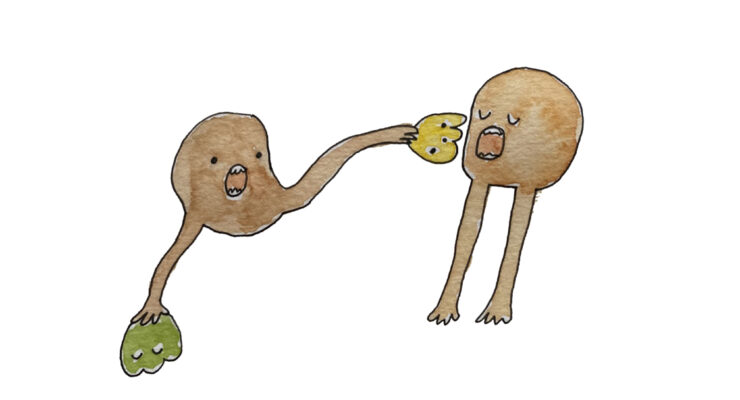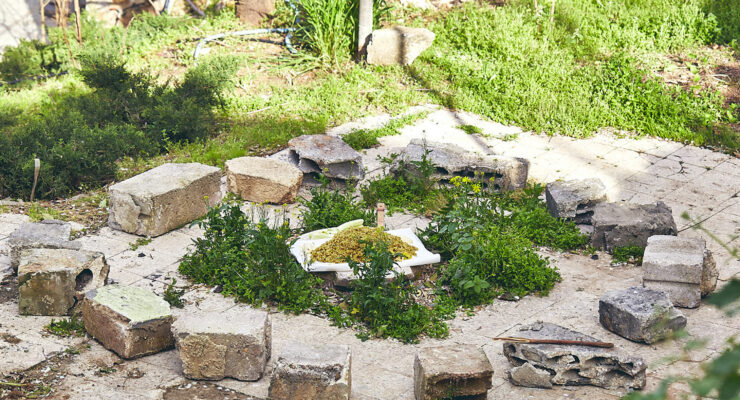An experimental collaborative food and human lab
Project Otenga is a multimodal space for nurturing cross-disciplinary collaborations and creative convergence through the medium of food. The name Otenga comes from a fruit, widely popular in Assam, India. The petals of the flower which is to become this fruit, instead of shedding, start wrapping around each other and grow thicker and stronger to become the fruit. We used this as a metaphor to signify our philosophy of collaboration and transformation towards betterment. We gradually started this journey as a slow cafe with slow design principles and now we are growing as an experimental collaborative food and human lab.
Founded by Dayananda Meitei and Kabyashree Borgohain, Project Otenga is situated in the heart of Ahmedabad University in the state of Gujarat in India. Project Otenga offers physical and mental space to engage an audience of unified interests and unconventional thinkers in anticipating ‘what is next’ and thereby strengthening the sense of community by curating appropriate events.
While Designer Kabyashree Borgohain pursued an undergraduate program in Accessory Design from the National Institute of Fashion Technology (NIFT) in Chennai and later masters in Strategic Design Management from the National Institute of Design (NID) in Gandhinagar, her interest were inclined towards creating new vocabularies and perspectives to address design and food together. Our correspondent Ishpreet Batra interviewed her.
What has been your defining Food and Design project so far?
It was my graduation project for my master’s thesis at NID. An experimental pop-up house-cafe that was installed for four months in a strategic location that hosted several academic institutions nearby. Space was created in order to increase spontaneous constructive interactions and creative collaborations among students from various colleges. It was a structural setup, presented in the most unstructured way to its audience, to immerse them into a feeling of home. The objective was to study if Food and Design can be an integrating tool in preventing mental health problems or newly formed patterns of depressions.
"Design is omnipresent and so is the usage of food."
How would you describe the field of Food and Design?
Food and Design is an emerging field in academic light but has had its presence in our life ever since we know of our existence. Design is omnipresent and so is the usage of food. We eat to live and live to eat at our fundamental core. A practice so integral to survival, growth, propagation, and evolution definitely needs more understanding and conscious engagements to harness what we have than just flowing along with it. A medium so strong that keeps unwinding more facts about humans and who we are is indeed worth exploring in the design light.
Designer Kabyashree Borgohain

Which emerging designer do you think is interesting or inspiring?
I love Bompas and Parr and their approach to multi-sensorial experiments around food. Lately, the experiments by Jozef Youssef and Charles Spence in gastrophysics has been very inspiring. Multidisciplinary approaches have always fascinated me.
Do you think designers working with food need to address politics and social issues?
Social conditioning is an intrinsic part of how we think and make choices, and food is significantly associated with our thought and behavior. Food has created a lot of social, economic and political boundaries across the world. The rejection of a few foods and the selection of a few establishes identity among people, on the grounds of religions, society, and communities. India is a very vivid example. I feel it is important to consider such strong factors while working with food, sometimes to play along with the stereotypes, and at other times, to break them.
How do you see the future of food and design in India?
India’s diversity creates a lot of problems. Food becomes the focal point of dialogues, the motive behind almost everything we do, so a lot of solutions to systemic issues can be picked from the ‘idea of food’ – how we think about food is almost intertwined in our DNA. This makes food a potential design tool. With ancient cultures and strong traditional linkages to food in India, design needs to bring back the essence of those ideas, instead of pretentiously mimicking the west in the idea of fast or digital food.
What, according to you, is the best Food and Design example?
Currently, I like Kitchen Theory’s G-astronomy: ‘The Taste of the Cosmos for People with Visual Impairment’. I like the multidisciplinary approach to addressing sensorial perceptions through taste.
–
Read more about Project Otenga on their website: www.projectotenga.com or visit their Instagram @projectotenga









